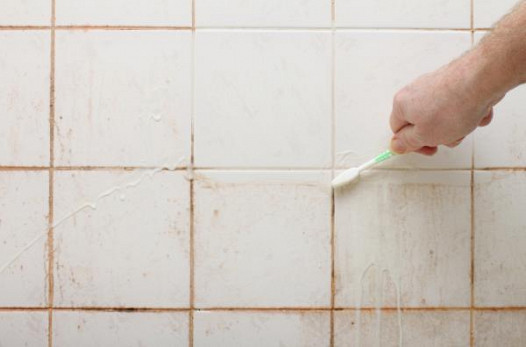Here below you'll find a bunch of excellent tips involving How to Fix a Water Damage Bathroom.

The shower room is extremely susceptible for wet accumulation as well as possible water damage because of the regular use water in it. This article uses straightforward inspection methods to help finding water damage risks.
The constant use of water in the shower room makes it exceptionally susceptible for wet accumulation as well as possible water damages. By examining it on a regular basis, you can reduce water associated problems.
The following set of assessments is very easy to perform as well as need to be done once in every three months in order to maintain your washroom in good shape and to avoid possible water problems caused by the tub, the shower, pipeline joints and also plumbing, sinks, closets, and the bathroom
Do not disregard executing these inspections and be extensive while doing them. Remember that these simple inspections can save you a lot of cash by supplying very early signs for water damages
Sinks and Cabinets
Sinks and cabinets are exposed to dampness and humidity daily and are frequently ignored. Check on a regular basis under the sink as well as on the kitchen counter over it. Fix any kind of drip in the catch as it might recommend drainpipe troubles. Browse the sink, slow-moving draining pipelines might show an obstructed drainpipe. Change sink seals if they are split or loosened.
Tub as well as Shower
The shower as well as tub need special attention and maintenance. Check the floor tiles and also change if split. Make certain that there is no missing out on grout between the tiles. Inspect and change fractured caulking at joints where the wall surfaces satisfy the floor or the bathtub. Clogged drains pipes and pipes troubles will certainly avoid the bathtub from drying out and also might suggest serious problems under the bath tub. Talk to a professional immediately to stop architectural damages. Take notice of stainings or soft areas around the bathtub wall surfaces as they may show an interior leak.
Plumbing
Signs for water damages are hard to identify considering that most pipes are mounted inside the walls.
Pay unique interest to flooring as well as walls dampness and discolorations as they may show an undetectable plumbing problem. Inspect moisture degrees in adjoining spaces as well.
The Bathroom
The toilet is a prone water junction. Examine the water lines and look for leaks around the bathroom seat, in the hose, as well as under the water tank. If you discover any indications of dampness on the floor around the commode, check for leakages in the toilet edge and also tank seals.
Know that hanging toilet bowl antiperspirants enhances the possibilities for clogs.
Water Damage Signs In The Bathroom To Avoid Cleanup
Musty smell
This is one of the easiest signs to catch because musty smells are so odorous. The damp, earthy, moldy smell should be a big red flag. The smell will develop when moisture gets trapped in surfaces, and begins to facilitate mold growth. Leaking pipes under cabinets, inside walls, and behind shower fixtures will cause moisture to stay trapped and not dry, which will lead to mold growth and spread. As soon as you notice any musty smells in your bathroom, have it checked for hidden water damage and cleanup signs.
Visible mold
If the smell isn’t there to give it away, sometimes you will actually see mold growth. Finding mold in your bathroom is a serious problem, because mold is very harmful to your health. By the time mold growth is visible, it also means that water damage has already occurred and been present for some time. The only way the mold problem can be resolved is to find the source of the moisture and get it stopped. To safely and adequately remove mold, you need to have professionals handle the remediation. Do not waste any time in getting mold problems addressed, fixed, and sanitized so that you can protect you and your family from the many respiratory symptoms caused by mold exposure.
Damaged floors
Bathroom floors should be able to withstand some exposure to water while still remaining in good condition. However, when excess exposure or water leaks occur, they will begin to damage even the most water-resistant flooring. If you notice any cracking, bubbling, staining, or warping on your bathroom floors, there is probably a water leak somewhere causing the distortion. If you notice areas of the floor have become softer, or even have a spongy feeling, there is probably damage to the subfloor. Subflooring is typically made up of plywood. When plywood is exposed to water or moisture, it will absorb it. Once it has become saturated, the weight of the excess water will cause the wood to swell and soften. Check the floors in your bathroom frequently to catch any of these sings before they lead to damaged subflooring.
Changes on walls
When water leaks behind walls, it will cause changes in the drywall. Peeling plaster, blistering paint, and soggy wallpaper are all good indicators that excess water is building up behind the wall. Water leaking behind drywall will cause it to swell and be soft to the tough. If you start to notice gaps along the trim of your walls, or where tile meets the wall, it could also be a strong indicator that there is a leak behind the wall. Any changes, distortion, or damage on the walls should be evaluated as soon as you notice it to prevent further water damage and cleanup.

Do you really like reading up on Common Causes of Water Damage in a Bathroom? Try to leave feedback down below. We will be delighted to know your reactions about this posting. Hoping that you visit us again in the future. Sharing is caring. Helping people is fun. Thank you for going through it.
Book Service Now